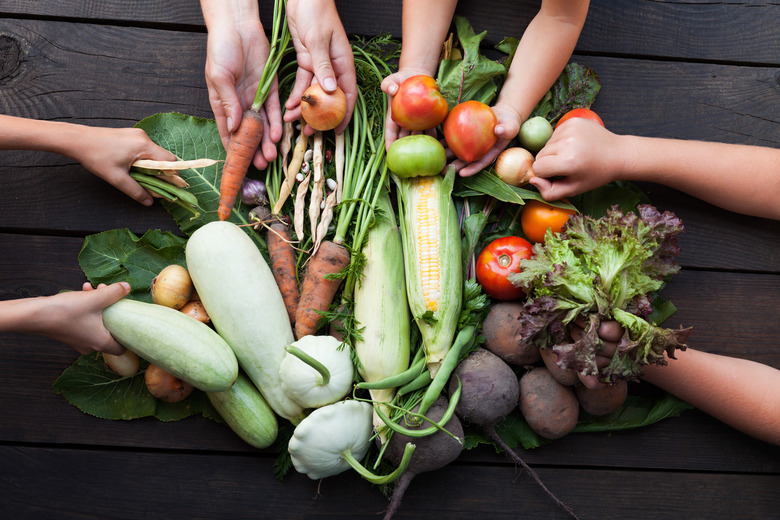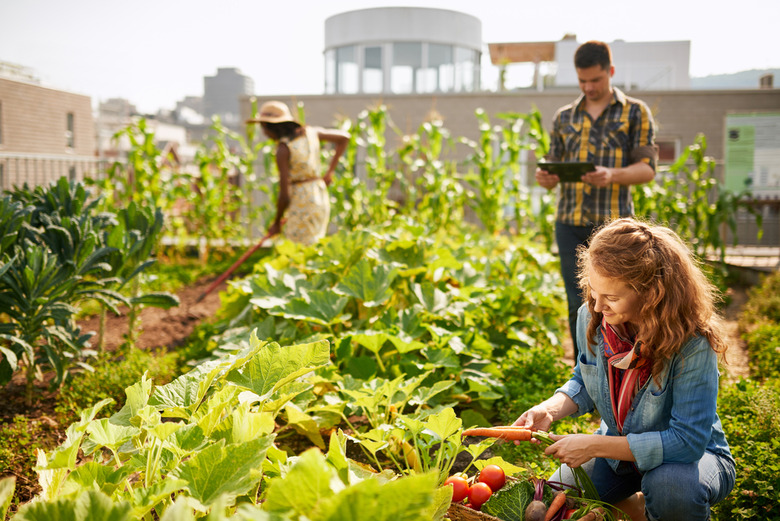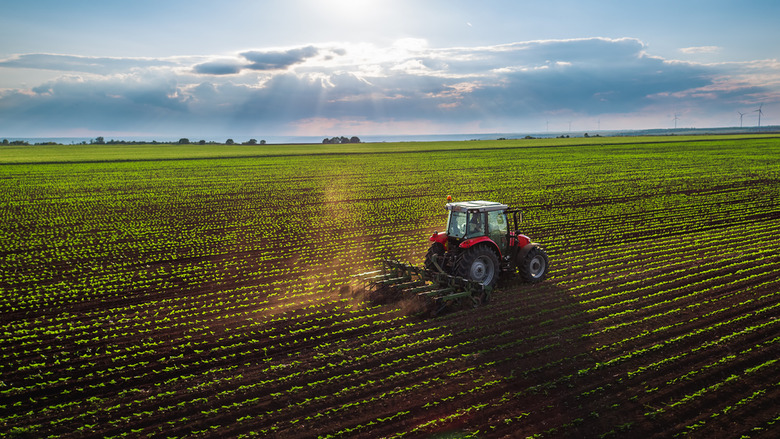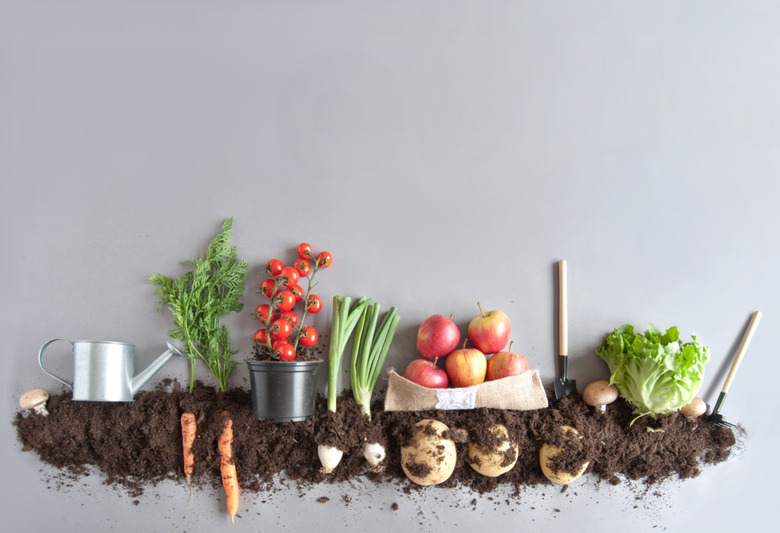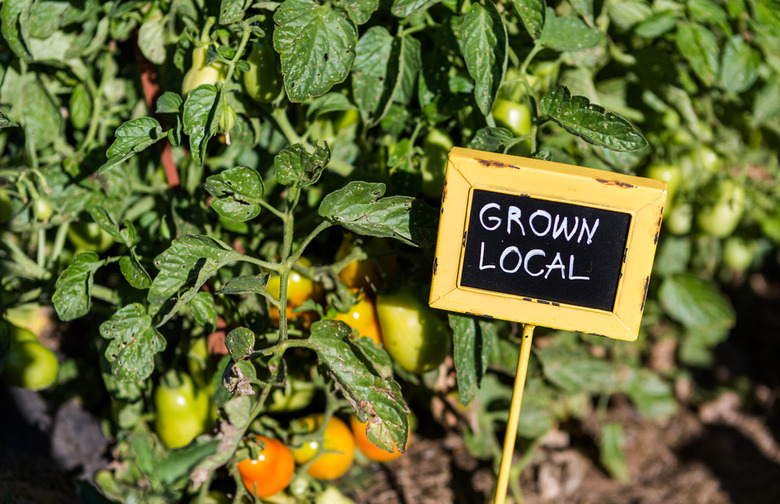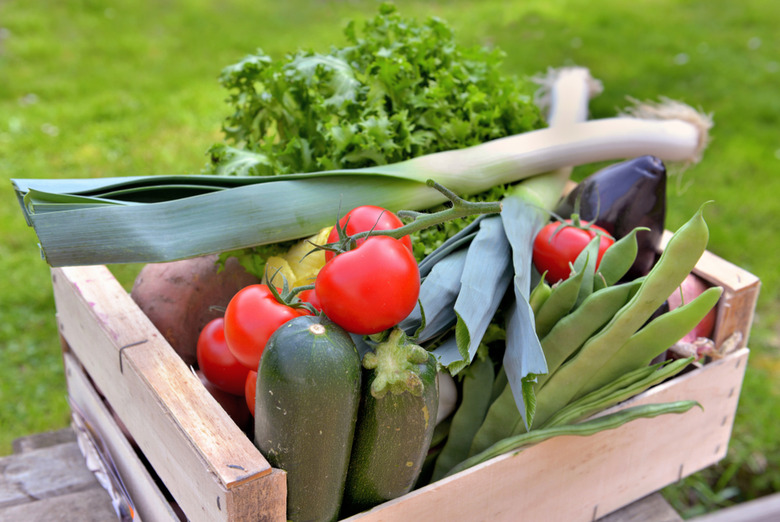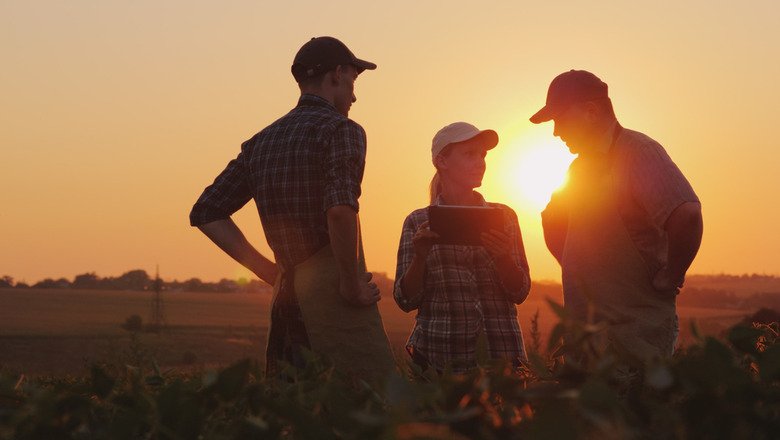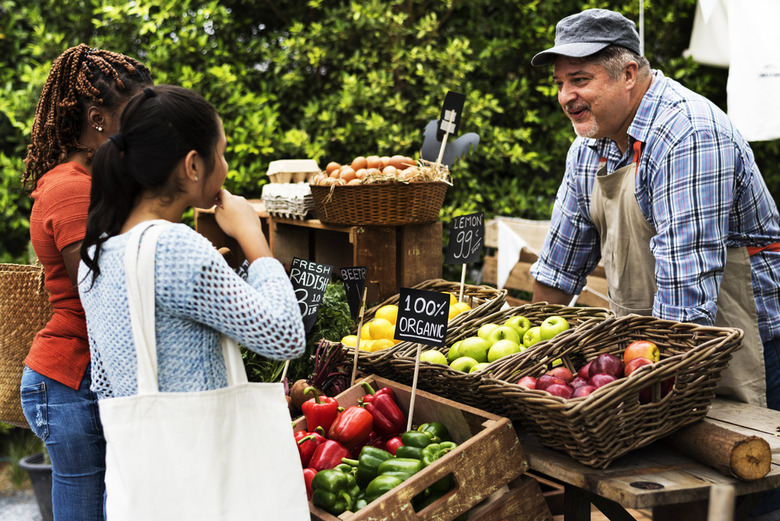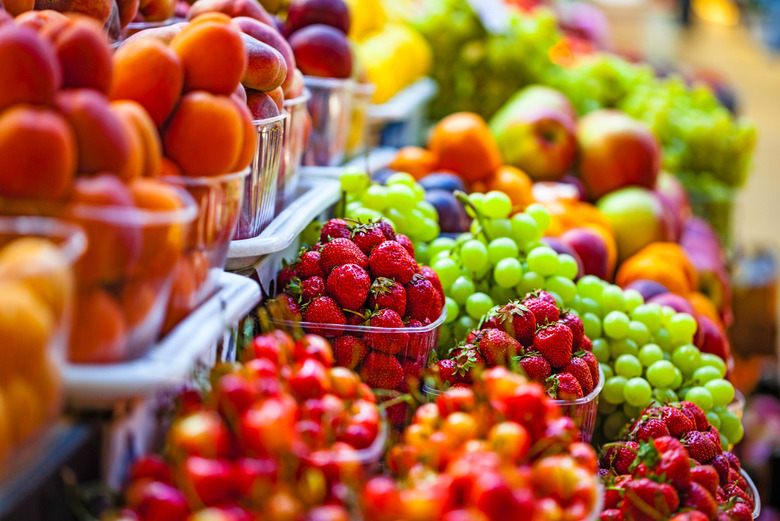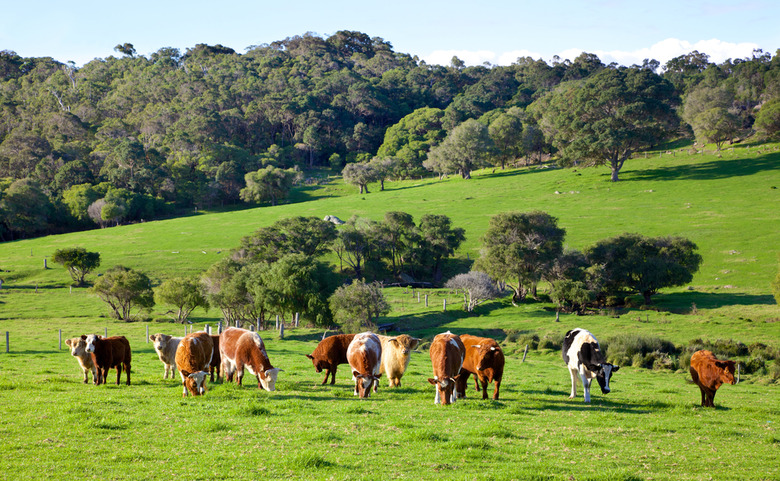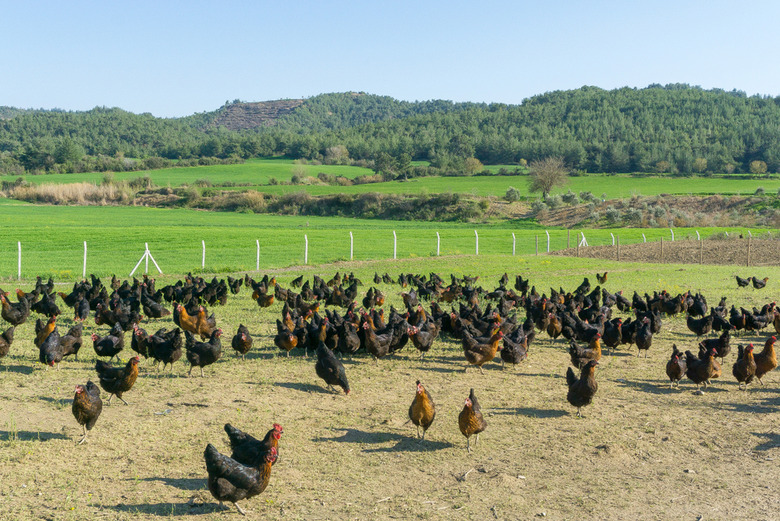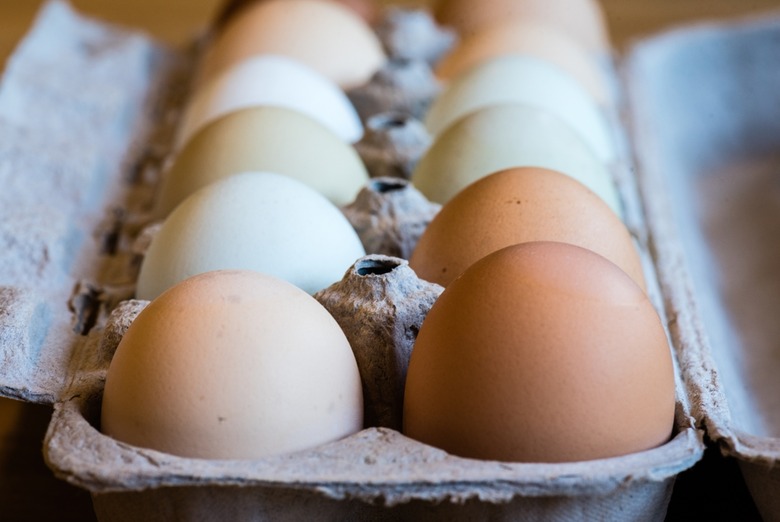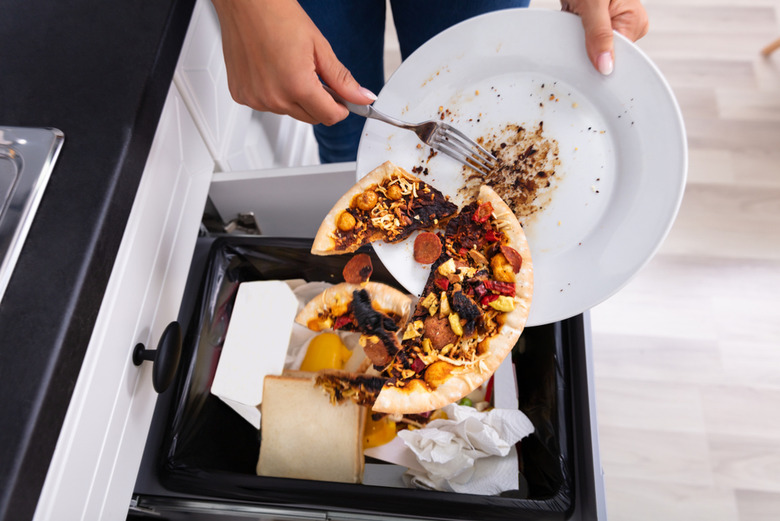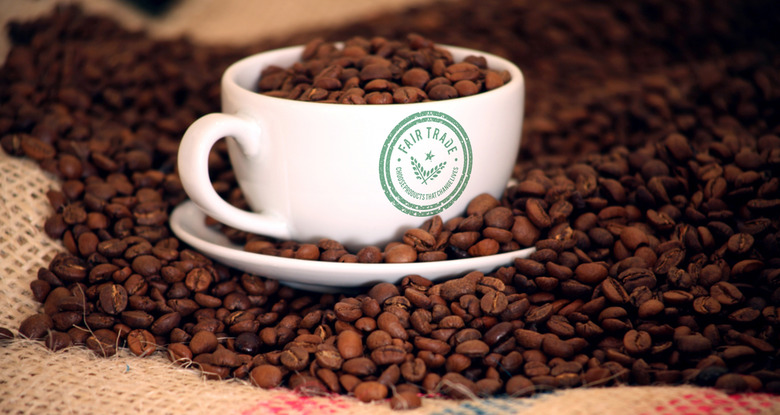What Is Sustainable Food?
Visit any of America's best restaurants and you'll most likely come across ingredients being sourced with an eye toward sustainability. But what does that mean, exactly? What makes food sustainable?
Sustainable food doesn't actually have an official definition. However, in the 1990 Farm Bill, the term "sustainable agriculture" is defined as "an integrated system of plant and animal production practices that will, over the long term do the following: satisfy human food and fiber needs, enhance environmental quality and the natural resource base, make the most efficient use of nonrenewable resources and on-farm resources, sustain the economic viability of farm operations and enhance the quality of life for farmers and society as a whole."
This can be a little confusing, so to help us unpack it all, we spoke to Marion Nestle, a former professor in the department of nutrition, food studies and public health at New York University and a noted writer on the politics of food. We also consulted with Andrew Walmsley, director of congressional relations at the American Farm Bureau Federation, for insight into sustainable agriculture and what sustainable food really means.
So what exactly is sustainable food?
According to Nestle, whose books include "Food Politics," "Safe Food" and "What to Eat," the current definition for sustainable food is "regenerative." Regenerative, in this case, simply means "putting back into the soil what gets taken out," she said. "The idea of sustainable food is built on principles that further the ecological, social and economic values of a community as a whole."
How sustainable agriculture plays a role
Sustainable food and sustainable agriculture go hand-in-hand. Sustainable agriculture is a production system that's good for the environment, people, farm workers and animals. "Many people are surprised when we say farmers are the first environmentalists, but it's true," Walmsley told The Daily Meal via email. In fact, more than 15% of all farmland is dedicated to conservation and wildlife habitat. "All of this is to say that society's increasing interest in sustainability is really just catching-up to farmers' longstanding commitment to it," he said. And according to the One Earth Science & Technology Initiative, proper farming without the use of pesticides actually increases the soil's carbon content and fertility.
Sustainable food’s relationship to organic food
"Organic used to mean sustainable," Nestle said. "But the USDA's definition of organic does not require regenerative processes, (however) most organic farmers do engage in regenerative practices." According to the USDA, certified organic foods are grown and processed according to federal guidelines addressing soil quality, animal raising practices and pest and weed control among other factors.
The difference between local food and sustainable food
A common question is whether or not farmers markets contribute to food sustainability. "Local food can be grown or raised under industrial conditions," said Nestle, who added that one should not assume everything sold at a farmers market is regenerative. However, the increase in farmers markets has created new opportunities for many farmers across the country, Walmsley said. More access to local produce and ingredients enhances sustainability as an opportunity to be more economically viable.
The sustainable and farm-to-table movements need to be more accessible
Whether it's at a casual restaurant or in your home kitchen, farm-to-table is one of the biggest culinary trends of the past decade. Eating locally and reducing steps in the food production chain can reduce the overall environmental footprint, but not everyone has the luxury of affording these options. "The bottom line is that there are trade-offs between different production practices: one size does not fit all," Walmsley said.
Farmers aren’t the only ones sustainable food impacts
"Taking care of the land and producing more using fewer resources is a worthy goal not only for farmers, but also for processors, retailers and restaurants." Walmsley said. Food sustainability doesn't just start and end at the farm — it reaches every level of the food production chain.
How sustainable food impacts the environment
According to the non-profit World Wide Fund for Nature (WWF), agriculture is the biggest cause of forest loss, and in fact, our current food system is responsible for 60% of biodiversity loss worldwide. Sustainable food systems and agriculture attempt to conserve energy by using renewable energy sources like wind and solar power.
How you can contribute to sustainable agriculture
Consumers can contribute to sustainable agriculture by purchasing organic produce, or from producers who engage in regenerative practices. Next time you're at the local farmers market, feel free to ask the right questions before you buy. For starters, you can ask vendors whether or not they grew the spinach themselves, when something was picked and where their farm is located. Here are a few more ways you can be more sustainable in your food choices.
Buy as much seasonal produce as you can
Choosing local and in-season produce cuts down on a lot of wasteful transportation emissions, in addition to being fresher. For example, the strawberries at the grocery store may have traveled thousands of miles in a box truck. Vegetable and berry specialist Vern Grubinger from the University of Vermont wrote in an article published by the school that buying local produce also helps farm families stay on the land. Well-managed farms help our ecosystem as well by conserving fertile soil, protecting water sources and helping to remove carbon from the atmosphere.
Eat fewer animal products
Reducing animal meat consumption can have a significant impact on reducing our carbon footprint, which is a key factor in food sustainability. According to a review published by the University of Michigan's Center for Sustainable Systems, meat products have larger carbon footprints per calorie than vegetable or grain products. This is in part because of the inefficient transformation of plant energy to animal energy and release of methane from manure. Likewise, a study in the journal Climate Change outlined that the livestock sector (which raises cows, pigs and chickens) generates as much greenhouse gas emissions as cars, trucks and other vehicles combined. And cattle ranchers have deforested millions of acres of land to support growing consumer demand.
But you don’t have to give up meat entirely
A balanced diet is beneficial for you and the environment. And you can still make a positive environmental impact without becoming vegetarian or vegan. According to the World Health Organization, if U.S. consumers cut back their meat intake by 40%, they'd be doing their part to reduce global food-related emissions. A similar study published in the journal Nature outlined a plan for keeping the food system within environmental limits by reducing meat and sugar consumption. The authors write that environmental effects of the food system could increase by 50–90% in the absence of technological changes and sustainable agricultural practices.
What does "free-range" mean?
The American Heart Association recommends eating an egg a day as part of a healthy diet for healthy individuals, and "free-range" is a buzzword around chickens and eggs. Because food sustainability emphasizes animal welfare, farms that produce free-range eggs must create an environment that allows hens to exhibit natural behaviors, including perches and nests. According to Nestle, "free-range" is thought to mean that the animals are primarily raised outdoors, free to graze as they please, but it can actually mean much less. The USDA actually defines "free-range" eggs as "produced by hens housed in a building, room or area that allows for unlimited access to food, water and continuous access to the outdoors during their laying cycle." So while there may be access to the outdoors, it doesn't mean that their lives are spent gleefully pecking around the countryside.
What about cage-free?
"Cage-free only means the chickens were not in cages," Nestle said. "It does not necessarily mean that they are running around in grass outside." For example, Nestle noted the label "cage-free" can also apply to industrially produced eggs from chickens or hens laying eggs under highly crowded conditions indoors. If you really want to emphasize sustainability, your best bet would be to locate a farm where you can purchase fresh eggs.
Watch your food waste
According to the USDA, 30 to 40% of the food supply in the U.S. is wasted, and it occurs at every stage of the production and supply chain. "When that food goes in the trash, all the resources it took to produce and transport that food are also wasted," Walmsley said. "One of the most important steps a consumer can take today is to be more conscious about the food they take off the shelves and bring into their home and ensuring it is used." It's also a good money-saving habit.
Are there certain labels to look for on products if you want to eat sustainably?
"Though there is no certification system for sustainability, consumers can look for the word 'regenerative,'" Nestle said. You can also look for products that are fair-trade certified, like coffee beans, tea and chocolate. Fair-trade practices encourage environmentally friendly production methods and ethical working conditions for laborers and farmers. Look for the "Fair Trade Certified™" label on products you regularly buy, because if you're already buying coffee, it's a great way to be sustainable in your everyday life.
More from The Daily Meal:
20 Things Pregnant Women Should Add to Their Diet
Diet Mistakes You're Making Before Noon
19 Facts About Diet Soda That Might Make You Finally Stop Drinking It
